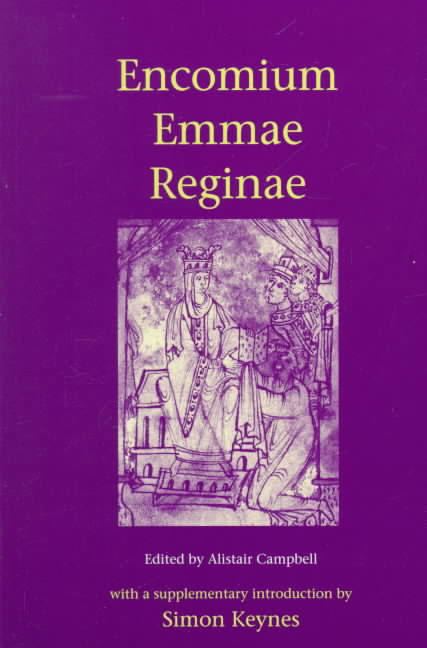Language Latin Originally published 1041 | Date 1041 / 2 | |
 | ||
Author(s) Manuscript(s) (1) BL, Add. 33241; (2) NLW, Hengwrt 158 (=Peniarth 281); (3) BL, Add. 6920; (4) Bibliothèque Nationale, Fonds Lat. 6235; (5) Courtenay Compendium (olim Exeter, Devon Record Office) Similar Anglo‑Saxon Chronicle, Queen Emma and Queen E, Writing Power in Anglo‑Sa, Gesta Hammaburgensis ecclesiae, Ágrip af Nóregskonungasögum | ||
Encomium Emmae Reginae or Gesta Cnutonis Regis is an 11th-century Latin encomium in honour of Queen Emma of Normandy. It was written in 1041 or 1042 probably by a monk of St Omer.
Contents
Manuscripts
Until 2008 it was believed that there was just a single manuscript surviving from that time, lavishly illustrated and believed to be the copy sent to Queen Emma or a close reproduction of that copy. One leaf has been lost from the manuscript in modern times but its text survives in late paper copies. A new manuscript has been found in the library of the Earl of Devon however, believed to have been compiled in 1043, around two years after the other surviving text. It adds detail to the content, showing the rise and succession of Edward the Confessor in a very positive light. The other manuscript offers him just a fleeting mention. The new manuscript has been acquired by the Royal Library of Denmark.
Date and provenance
It is usually thought that the text was written in 1041 or 1042, in response to a politically delicate situation that had recently arisen at the English court. Harthacnut (r. 1040-2), Emma's son by Cnut, was king of England and Edward, her son by Æthelred, had been invited back from exile in Normandy and sworn in as Harthacnut's successor. The presence of a king and another claimant to the throne was a recipe for social unrest, especially considering that Edward's brother, Ælfred (d. 1036), had earlier been betrayed (as rumour had it, at the instigation of Earl Godwine). As the portrait (above) emphasises, the work appears to have been specifically directed at Harthacnut and Edward, instilling a message about their past and future. As such, the Encomium is a heavily biased and selective work. Commissioned by Queen Emma herself, it strives to show her and Cnut in as favourable a light as possible: thus it silently glosses over Emma's first marriage to Æthelred the Unready, contests that Harold Harefoot, Cnut's son by his first wife Ælfgifu, was indeed a son of Cnut and puts the blame for Ælfred's murder squarely on Harold.
Despite its shortcomings the Encomium is an important primary source for early 11th-century English and Scandinavian history.
Authorship
The anonymous author, often simply referred to as "the Encomiast", was probably a Flemish monk, as he identifies himself in the text as a monk of St Bertin's or St Omer's. He mentions that he wrote the work at the special request of his patroness Emma, to whom he shows some gratitude, and that he had witnessed Cnut when the king visited the abbey on his journey homeward.
Contents
The Encomium is divided into three books. The first deals with Sweyn Forkbeard and his conquest of England. The second deals with his son, Cnut the Great, his reconquest of England, marriage to Emma and period of rule. The third deals with events after Cnut's death; Emma's troubles during the reign of Harold Harefoot and the accession of her sons, Harthacnut and Edward the Confessor to the throne.
Form
The form and style of the text are much indebted to classical authors. Vergil and his Aeneid are explicitly cited in the prefatory letter and in Bk I, Ch. 4, while influences from Sallust, Lucan, Ovid, Horace, Juvenal and Lucretius have also been detected.
